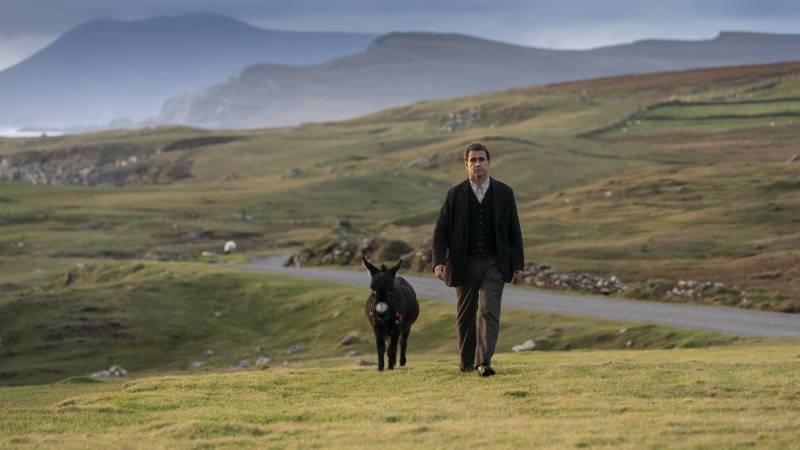Because we as a culture can mistakenly equate beauty with shallowness, it’s taken time for some to realize what a great actor Colin Farrell is. He’s always been a charismatic screen presence, though in recent years he’s revealed striking new emotional depths as a leading man in movies like The Lobster and this year’s After Yang. He’s also proved willing to bury his good looks under mounds of prosthetics as the villainous Penguin in The Batman.
A Farmer Gets Dumped by His Best Friend in the Terrific 'The Banshees of Inisherin'

Farrell gives what may be his strongest performance yet in The Banshees of Inisherin, and one of the reasons he’s so good in it is that he’s playing a character who, perhaps like Farrell himself, is used to being underestimated. His character, Pádraic, is a sweet-souled farmer who’s spent his entire life on Inisherin, a small, fictional island off the coast of Ireland.
It’s 1923, and life here is simple and repetitive, which is why it sends off small shockwaves one day when Colm, Pádraic’s older best friend, refuses to join him for their usual afternoon pint down at the pub. He soon learns that Colm, who’s played by Brendan Gleeson, has decided to end their decades-long friendship with nary a word of explanation.
In time, the truth comes out: Colm finds Pádraic dull, and is tired of listening to the younger man’s endless yammering — especially since it keeps Colm from pursuing his passion: playing and composing violin music.
Gleeson is terrific at showing you the tenderness beneath his outward stoicism, and what’s heartbreaking is that Colm does still like Pádraic — but he also knows that their friendship is draining him. But Pádraic can’t accept Colm’s decision. He tries cajoling his former friend, then pleading with him, then badgering him.
At one point, Colm becomes so irritated that he threatens to physically harm himself if Pádraic doesn’t leave him alone. And since this is a movie written and directed by Martin McDonagh, the British Irish playwright and filmmaker with a taste for baroque comic violence, you know it isn’t an idle threat.
This movie isn’t as grisly as some of McDonagh’s earlier stage and screen works — I still have fond memories of seeing his blood-soaked play The Lieutenant of Inishmore years ago, and somewhat less fond memories of his Oscar-winning film Three Billboards Outside Ebbing, Missouri. Compared with that movie’s wildly uneven mix of comedy and tragedy, The Banshees of Inisherin is a quieter, gentler work, but its melancholy also cuts much deeper. McDonagh opens the story with gorgeous, postcard-worthy images of Inisherin, all lush green landscapes and even a rainbow in the sky. But by the end, he has quashed any sweet or sentimental thoughts we might harbor toward this isolated community, where people can be spiteful and small-minded and mock those who want to leave or strive for something better.
Few people know this as well as Pádraic’s bookish sister, Siobhan, played by a terrific Kerry Condon. She loves her brother dearly, flaws and all. She’s also one of the few people in town who can connect with Colm intellectually, and she understands why he wants to be left alone.
There are other colorful supporting characters, too: a nasty policeman, a doom-prophesying old woman and an annoying young man played, with marvelous pathos, by Barry Keoghan. And I haven’t even mentioned the animal cast: Two of the movie’s most important characters are Colm’s pet collie and Pádraic’s pet donkey, noble creatures who put the pettiness and stupidity of humans to shame.
There’s something a little glib about that idea — and also about the way The Banshees of Inisherin uses the Irish Civil War, raging in the background of the story, as a counterpoint to the conflict between Pádraic and Colm. But there’s nothing glib about how these two characters are written. To watch Farrell and Gleeson rage against each other is to better understand what happens when an unstoppable force meets an immovable object. It’s been a while since a movie extracted this much drama from the end of a beautiful friendship.
9(MDAxOTAwOTE4MDEyMTkxMDAzNjczZDljZA004))

